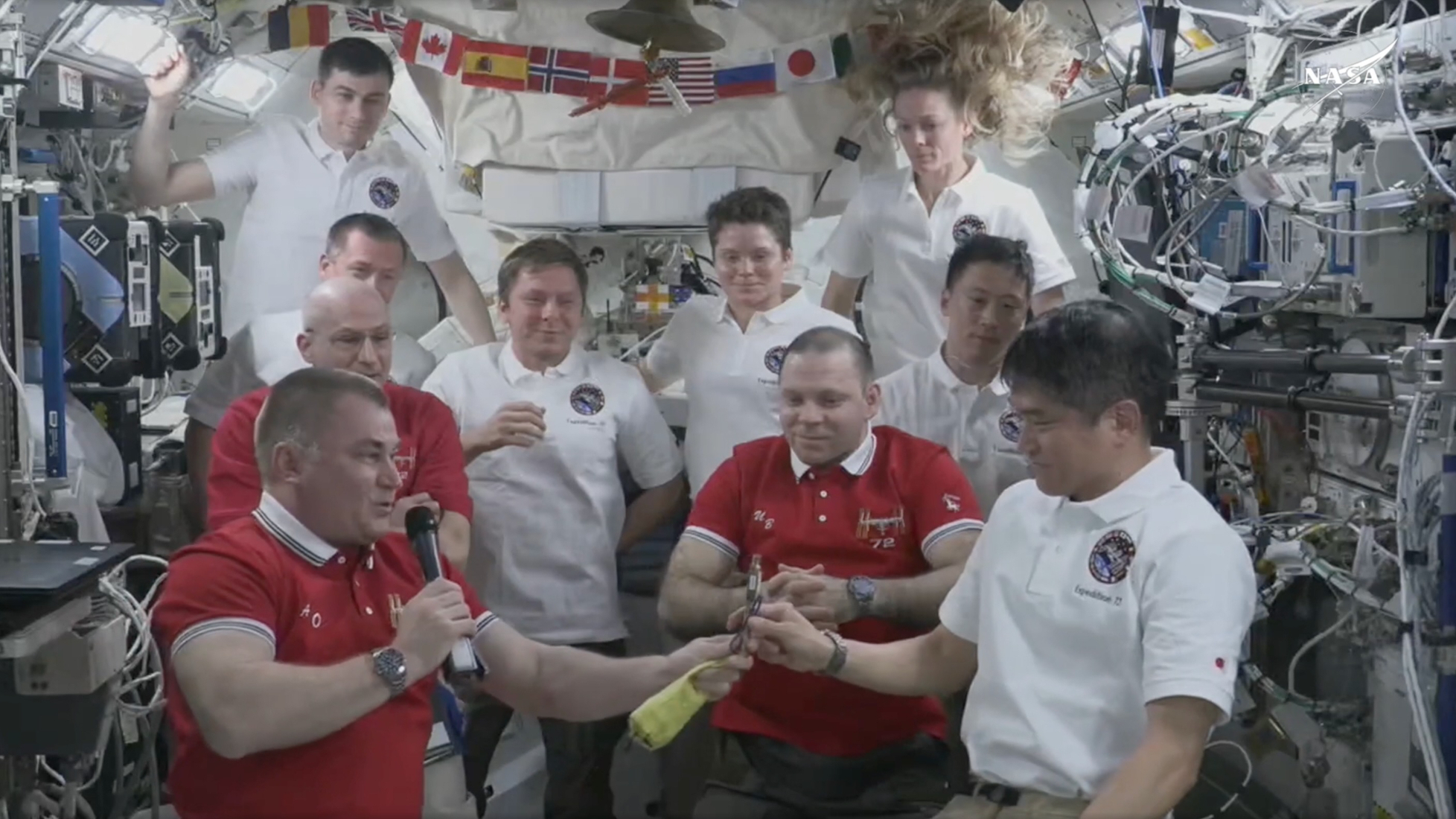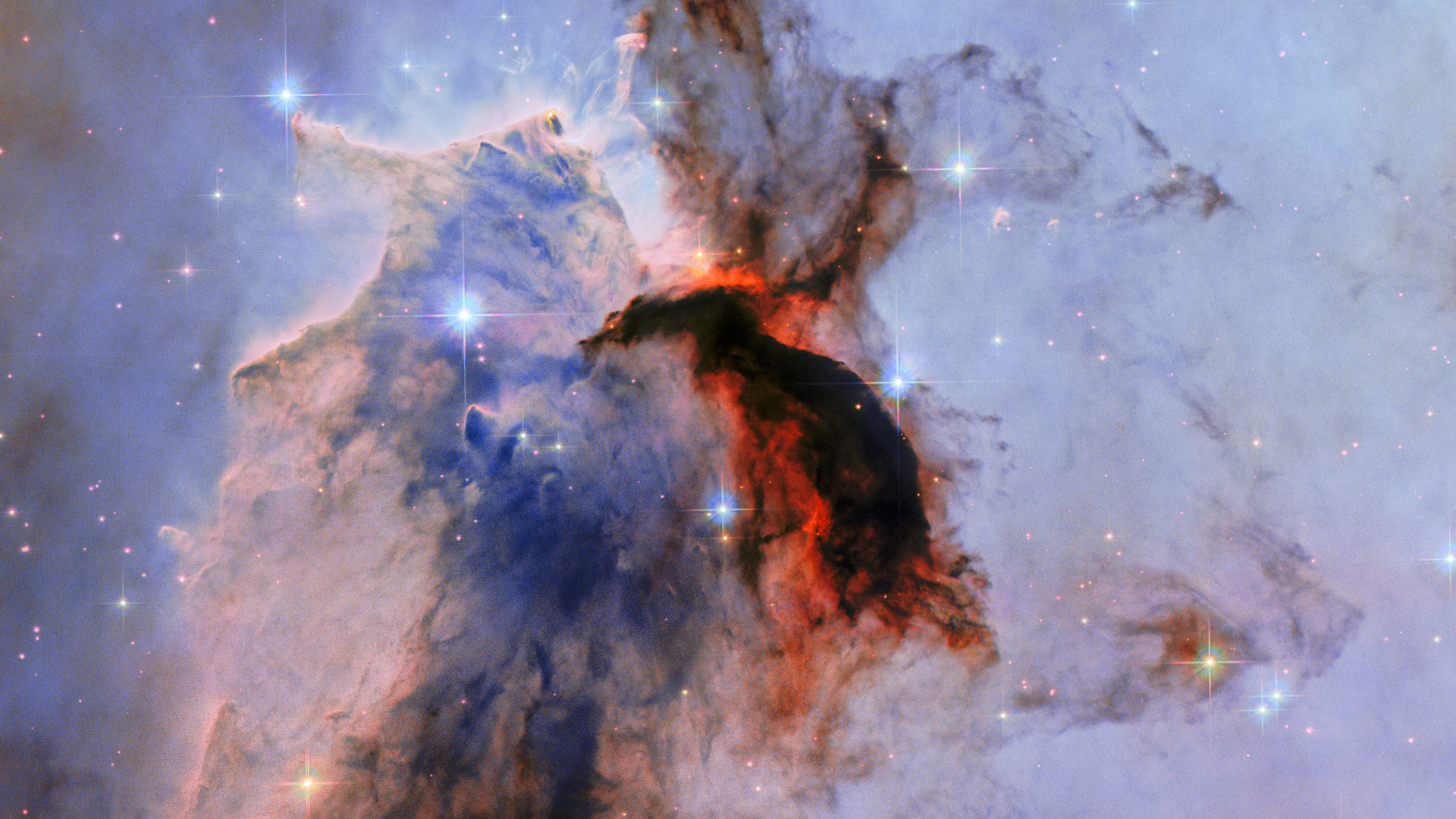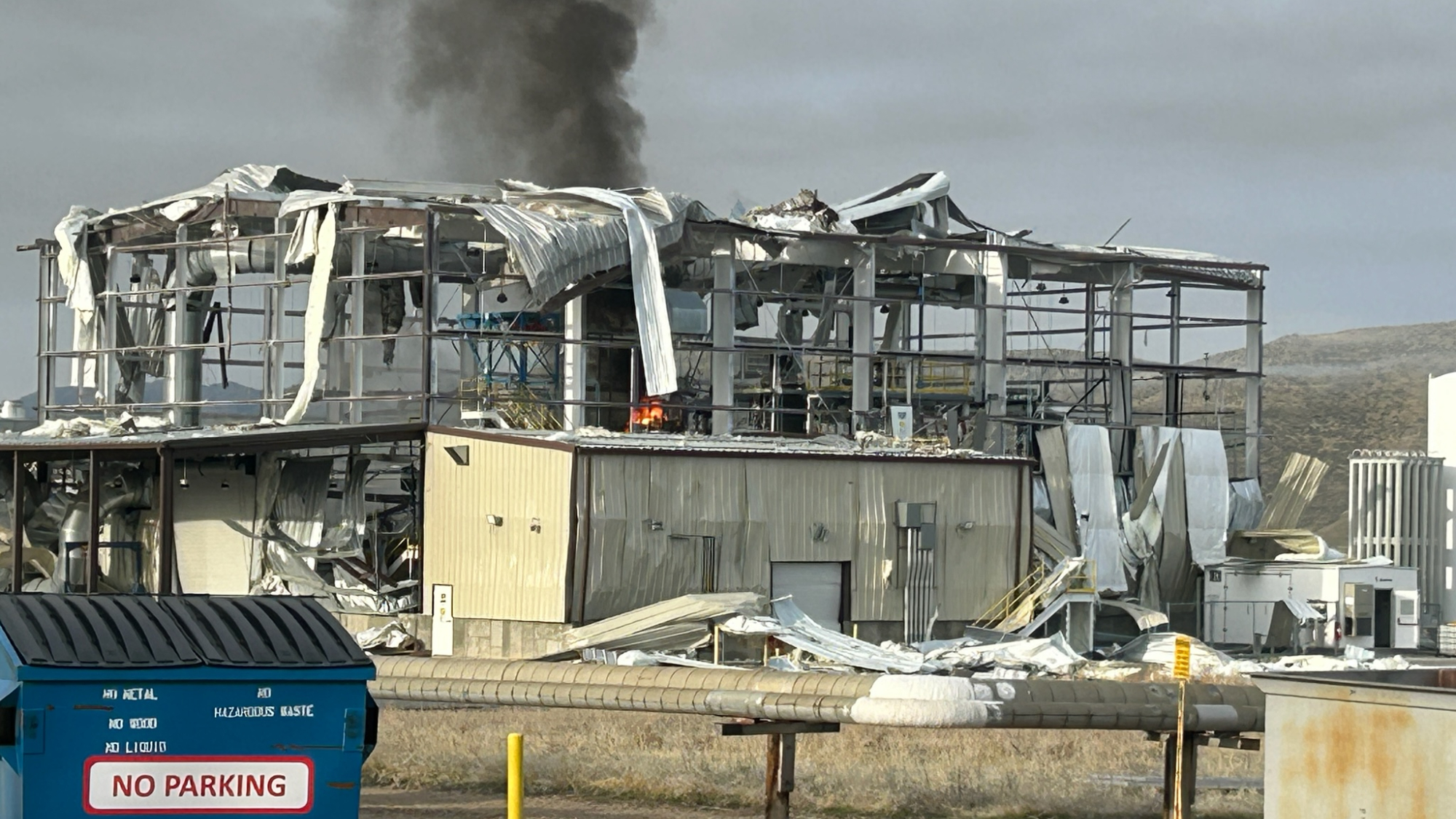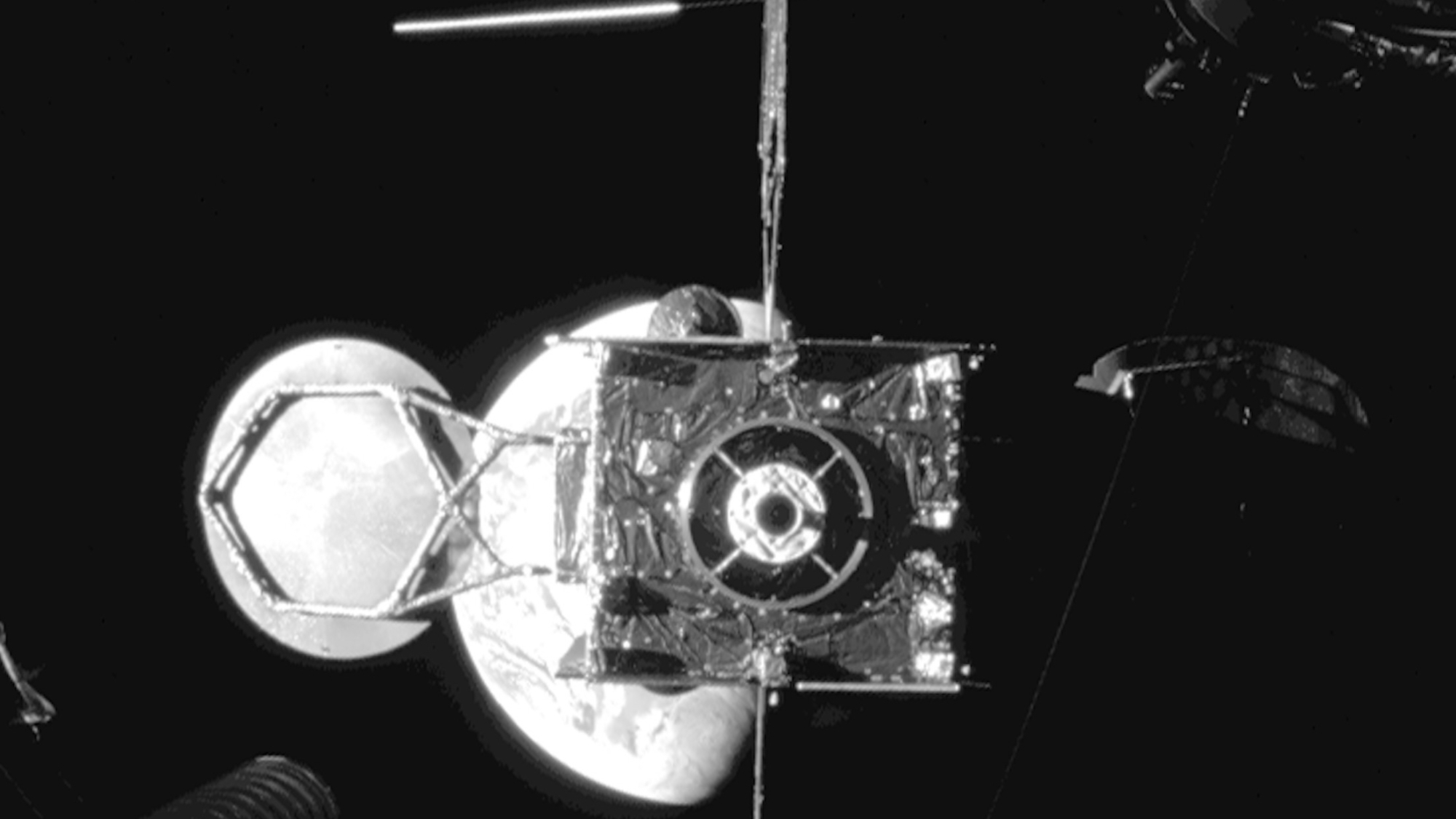'Apollo: When We Went to the Moon' exhibit lands at NYC's Intrepid Museum
'Apollo' is the largest temporary exhibition to ever be hosted by the Intrepid Museum.
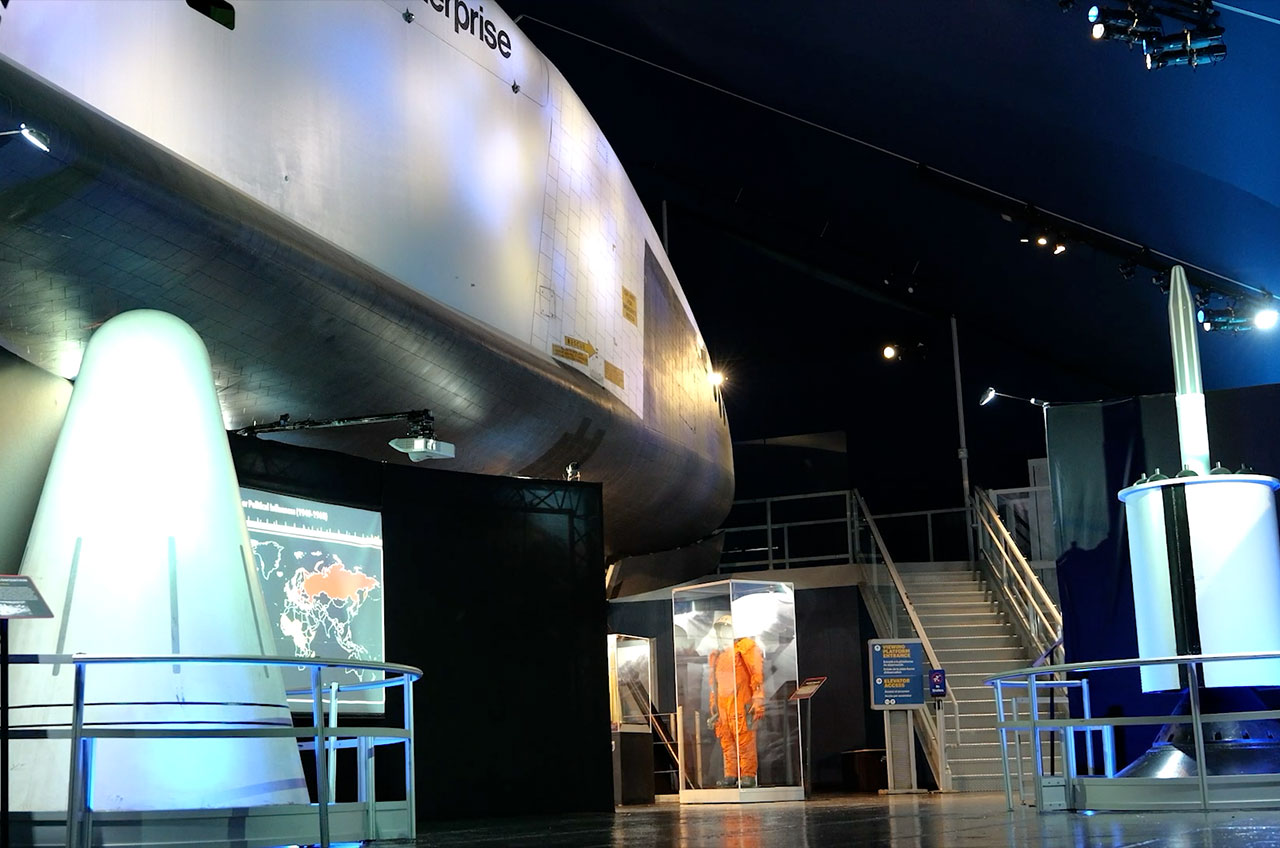
Given it was navy ships that recovered the Apollo crews and spacecraft after splashing down from the moon, it is appropriate that the largest temporary exhibit ever hosted by the Intrepid — a converted aircraft carrier — is themed to the first lunar landings.
The museum, which since 1982 has been docked on the west side of Manhattan, has landed "Apollo: When We Went to the Moon," a sprawling display that "highlights the remarkable history of humanity's voyage beyond our home planet and the extraordinary individuals who made it happen." And though the USS Intrepid was not involved in the Apollo recoveries (it brought home the second orbital crewed Mercury and first piloted Gemini capsules), it has since become a world-class sea, air and space museum and home of NASA's prototype space shuttle orbiter.
"'Apollo' deeply focuses on how humans persevered to get to the moon and space in general," said Kate Good, space curator at the Intrepid Museum, in an interview with collectSPACE.com. "The content has the underlying theme of the space race woven into it, with the feeling of monumental urgency to be first in everything. That intensity and sustained determination spurred the U.S. to continue developing groundbreaking technologies."
"All of these themes are consistent from the beginnings of projects Mercury, Gemini and Apollo, which brought us to the space shuttle era, and includes the museum's beloved shuttle Enterprise," said Good. "Visitors have the opportunity to learn about the people, politics and STEM [science, technology, engineering and math] advancements that made, and continue to make, the U.S. space program stronger and more successful than ever."
Developed by the education and curatorial staff at the U.S. Space & Rocket Center in Huntsville, Alabama and Flying Fish, a traveling exhibition company, "Apollo" uses photographs and artifacts from the rocket center's archives, as well as interactive experiences, to illustrate the motivations that drove the United States and former Soviet Union to "sacrifice man and machine in order to be the first on the moon."
Visitors are greeted by the sights and sounds of the 1960s space race as they enter "Apollo," which spans 9,000 square feet (840 square meters) in the Intrepid's space shuttle pavilion. As they walk under Enterprise and through the exhibition, guests learn about the advances in technology that made the moon landings possible and the cultural and political climates that affected the outcome. "Apollo" includes displays dedicated to the civil rights movement and Vietnam War, as well the public's response to the moon landings.
Among a collection of scale models — including a towering 1:10 scale Saturn V — "Apollo" showcases artifacts rarely seen by the public. Here visitors will find German rocket pioneer Wernher von Braun's drafting set; an authentic nose cone from a Jupiter rocket; a Soviet SK-1 spacesuit like the type worn by the first human to fly into space, Yuri Gagarin; and the gloves, bubble helmet and moon boots from an Apollo spacesuit.
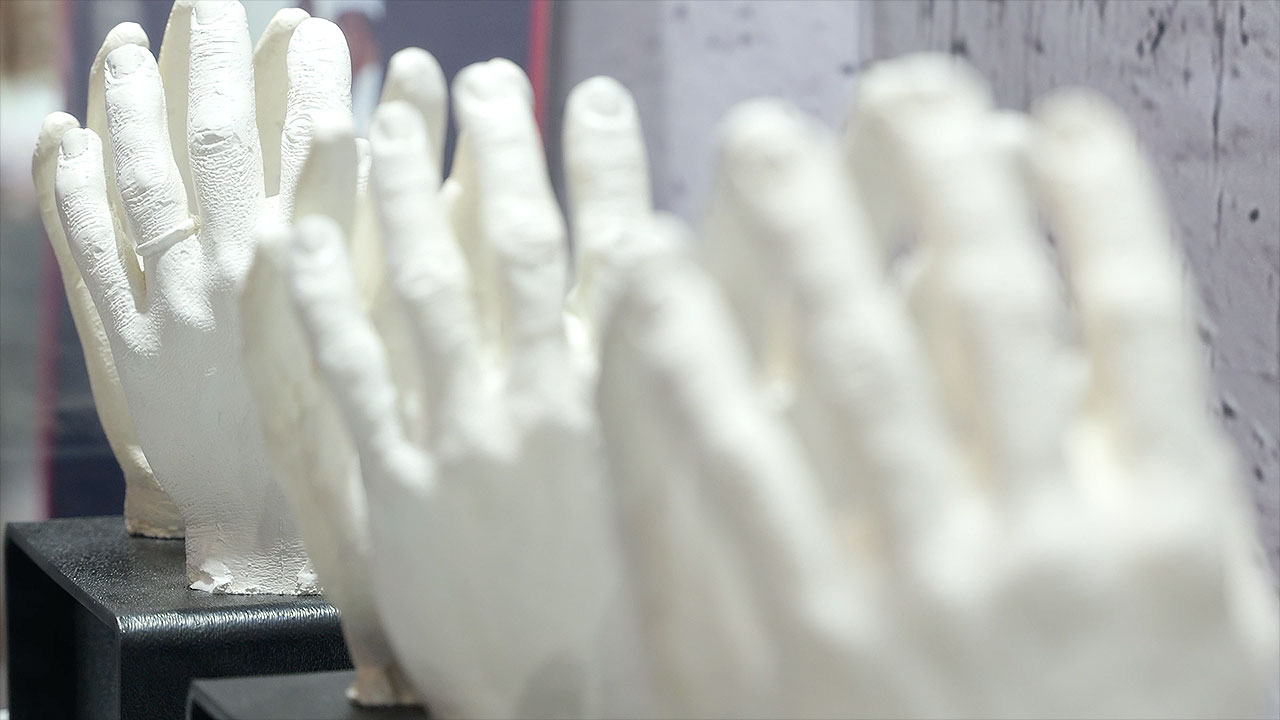
"Personally, my favorite artifact in the exhibition is the authentic hand casts of Neil Armstrong, Buzz Aldrin, and Michael Collins," said Good. "The casts were used to make sure their spacesuit gloves were the perfect fit without having to measure their hands over and over."
"Careful observers may even notice this neat detail: Michael Collins' cast includes an imprint of his wedding band," she said.
More than just look, visitors can also touch a piece of the moon in the form of a lunar meteorite and make their own prints in the lunar dust by walking across an digital moon surface floor. Guests can also climb aboard a mockup of an Apollo lunar rover for what the Intrepid promises will be a unique photo opportunity.
"The Intrepid Museum added more detailed content, which is accessible via the 'Bloomberg Connects' app," said Good, referring to the free mobile guide to museums and parks. "There are several QR codes that guide visitors to additional information about Wernher von Braun, the civil rights movement, the Vietnam War and NASA's current Artemis program."
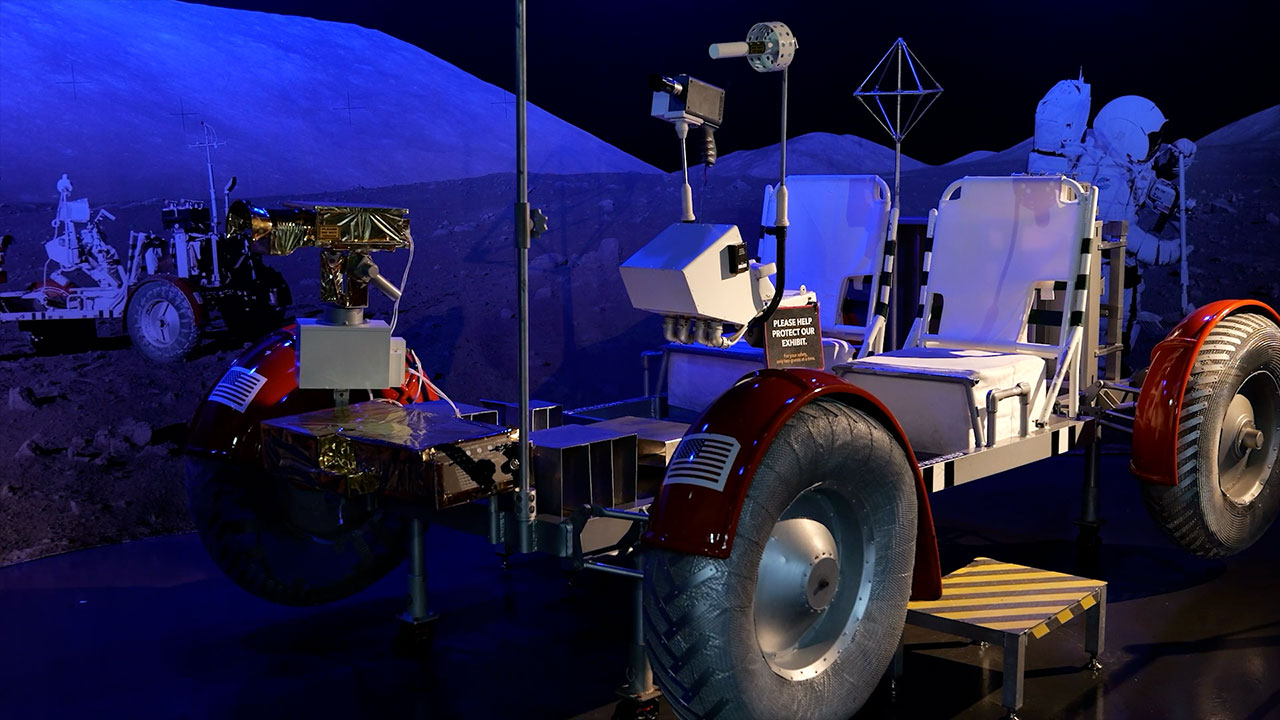
The Intrepid has also scheduled a June 23 virtual presentation featuring astronaut Fred Haise, who will speak about his experiences flying aboard Apollo 13. Onsite, the museum will host Astro Live nights on April 26 and July 26 with exhibit-related activities.
Entrepreneur and private astronaut Greg Olsen, whose Soyuz spacecraft is also on display in the shuttle pavilion, provided partial support for bringing the exhibit to the Intrepid.
Previous "Apollo" tour stops have included the U.S. Space & Rocket Center, the Science Museum of Minnesota, Space Center Houston, Discovery Place in North Carolina, the Henry Ford Museum in Michigan, TELUS World of Science in Canada, the Denver Museum of Nature & Science and the Virginia Museum of History & Culture.
"Apollo: When We Went to the Moon" runs at the Intrepid Museum from Tuesday (March 26) through Sept. 2.
Follow collectSPACE.com on Facebook and on Twitter at @collectSPACE. Copyright 2024 collectSPACE.com. All rights reserved.
Get the Space.com Newsletter
Breaking space news, the latest updates on rocket launches, skywatching events and more!
Join our Space Forums to keep talking space on the latest missions, night sky and more! And if you have a news tip, correction or comment, let us know at: community@space.com.

Robert Pearlman is a space historian, journalist and the founder and editor of collectSPACE.com, a daily news publication and community devoted to space history with a particular focus on how and where space exploration intersects with pop culture. Pearlman is also a contributing writer for Space.com and co-author of "Space Stations: The Art, Science, and Reality of Working in Space” published by Smithsonian Books in 2018.In 2009, he was inducted into the U.S. Space Camp Hall of Fame in Huntsville, Alabama. In 2021, he was honored by the American Astronautical Society with the Ordway Award for Sustained Excellence in Spaceflight History. In 2023, the National Space Club Florida Committee recognized Pearlman with the Kolcum News and Communications Award for excellence in telling the space story along the Space Coast and throughout the world.



